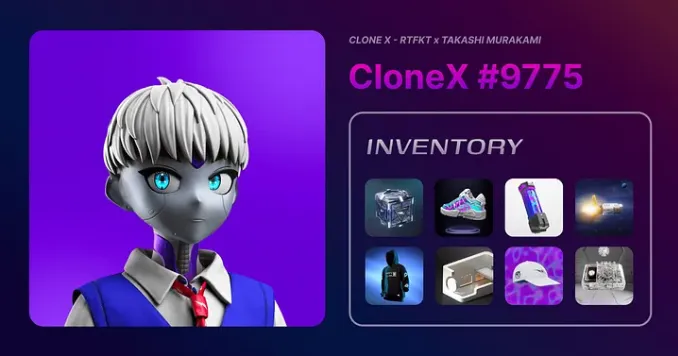Web3 is more than just the third iteration of the Internet, it’s a movement that aims to change the dynamics of digital participation. This involves different forms of digital ownership, data management, asset transfer, and social experience. And the best part is that builders in the blockchain ecosystem are working tirelessly to launch innovations that further push this movement in the right direction.
Two recent innovations that have received a lot of attention are ERC-6551 and Soul Bound Tokens (SBTs). If you’re paying attention, you’ve probably heard of both; if not, this article will explain what they are, how they relate to each other, and their importance in the Web3 social ecosystem.

ERC-6551 is an Ethereum Improvement Proposal (EIP). This standard allows NFTs to function as smart contract wallets themselves, meaning that NFTs can hold tokens, receive airdrops, purchase other NFTs, or basically perform any task that a smart contract wallet is capable of.
ERC-6551 or Token Bound Account (TBA) opens up new possibilities for storing digital assets inside digital assets. The standard associates NFTs with their "token bound accounts" or "token bound wallets", enabling them to own a range of ERC tokens, such as ERC-721, ERC-1155, USDC or ETH. In simple terms, ERC-6551 adds a pocket to each NFT, giving the NFT the functionality of a wallet account.

The proposal was jointly created by Web3 studio Future Primitive and builders of NFT creation platform Manifold in February 2023. Although the proposal has not yet officially become a token standard, it has been adopted by protocols and projects in the ecosystem.
According to SeaLaunch’s Dune Analytics data, from July to now (October 22), 228,140 ERC-6551 accounts have been activated, there have been 4,588 ERC-6551 transactions on Ethereum and Polygon, and TBAs hold a total of 113,371 NFTs.
ERC-6551s are nicknamed “backpack wallets” because they act like a backpack and can carry all of your digital belongings. The backpack wallet nickname also refers to the fact that ERC-6551 NFTs can be used to create composable NFTs. This means that you can combine multiple ERC-6551 NFTs into a more complex single NFT. For example, you can combine a character NFT, a weapon NFT, and an armor NFT into an “adventurer NFT.”
The Backpack Wallet nickname is very apt because it captures the versatility and power of ERC-6551 NFTs. They are not just static digital assets; they are dynamic and interactive entities that can be used to create a variety of new and innovative applications.
What are Soul Bound Tokens (SBTs)?
We all love NFTs, especially the innovation they bring to digital ownership and identity. NFTs allow us to prove digital ownership of an asset, and even Twitter has a system to verify that someone owns their avatar (PFP). However, while NFTs are unique digital representations of ownership, they are transferable and can be bought and sold. This limits the use of NFTs.
To clearly understand these limitations, Ethereum co-founder Vitalik Buterin published an article titled "Soul Binding" on his blog on January 26, 2022. In the article, he talked about the concept of soul-bound items in Minecraft, which cannot be transferred or sold to other players once picked up.
He explains how bringing this concept to NFTs could drive a shift away from NFTs that simply represent digital collectibles, towards more personalized, non-transferable assets. In Vitalik’s words: “Today’s ‘Web3’ space is often criticized for being too money-oriented. The possession of wealth and outright waste are celebrated, which limits the appeal and long-term sustainability of the culture that forms around these items. Of course, even financialized NFTs can provide important benefits, such as funding artists and charities that would otherwise go unrecognized. However, this approach is limited, and there are many unexplored opportunities in moving beyond financialization. Making more items ‘soulbound’ in the crypto space could be a path to an alternative, where NFTs can represent who you are, not just what you can afford.”

By May 2022, Vitalik Buterin, Eric Glen Weyl, and Puja Ohlhaver proposed the concept of Soul-Bound Tokens (SBTs) in a document titled "Decentralized Society: In Search of the Soul of Web3," which aims to address the current limitations of NFTs and other decentralized innovations.
In the document, they mention “souls” which are wallets that hold soul-bound tokens. They also give an example of how a person might have a soul that stores SBTs representing educational qualifications, work experience, or hashes of their work.
Soulbound tokens are non-transferable digital assets that cannot be bought or sold (unless you sell your entire wallet) and are not designed to have a market value. Instead, they can be self-issued like resumes, issued by individuals or organizations to represent achievements or certifications.
SBTs are definitely a game changer for digital identity. This paper dives into how SoulBound Tokens can reduce Web3 platforms’ reliance on Web2 for identity authentication and help enhance DeFi concepts.
What is the relationship between ERC-6551 and SBTs?

When you consider their potential synergistic impact, ERC-6551 and SBTs are two innovations that are set to change the way we think about digital ownership and identity in Web3.
ERC-6551 is a technical standard that enables NFTs to function like wallets. This means that NFTs can now hold assets and interact independently on-chain.
SBTs, or Soul Bound Tokens, are a type of NFT that is non-transferable and cannot be sold. This means that SBTs are permanently bound to the account that owns them.
Although the concept of SBTs was first proposed, ERC-6551 is the first technical standard to address the shortcomings of scalability and security when implementing SBTs. Therefore, ERC-6551 makes it possible to implement SBTs in a scalable and secure way.
It is worth noting that SBTs can also be implemented without ERC-6551. However, ERC-6551 provides many benefits, such as a standardized way to mint and manage SBTs, and a way to interact with SBTs using TBAs.

One way to think about the relationship between ERC-6551 and SBTs is that ERC-6551 provides the foundation for the scalability of SBTs. ERC-6551 enables NFTs to hold assets and interact on-chain, which is critical for SBTs to represent credentials, attribution, and enrich the profile/personality of SBT holders through on-chain history and authenticity verification.
Another way to think about the relationship between ERC-6551 and SBTs is that they are two sides of the same coin. Together, ERC-6551 and SBTs have the potential to create a new paradigm for digital ownership and identity.
Why are ERC-6551 and SBTs important to Web3 social networks?

Web3 relies on innovation. The ideals of decentralization, transparency, user ownership, and community empowerment go beyond mere ideology. The transition from proposal to reality is largely due to the continued innovation in this space.
ERC-6551 and SBTs (Soul Bound Tokens) are the latest innovations and as we discussed in the article, they have great potential for Web3 social networks and could be a key factor for mainstream adoption. The following points are the importance of these innovations for Web3 social networks.
ERC-6551 and SBTs — The Future of Social Identity in Web3:

SBTs introduce a real digital identity symbol that can help seamlessly create a Web3 system that does not require Web2 verification. This promotes decentralization and improves the convenience of user experience. On the other hand, ERC-6551 enables SBTs to be transferred between different Web3 applications, making them more practical in Web3 social networks.
ERC-6551 and SBTs can be used in Web3 social networks in a similar way to how traditional social media platforms use user profiles and reputation verification systems.
For example, on traditional social media platforms, a user's profile is a collection of information about the user, such as name, brief introduction, location, and interests. A user's profile helps other users understand them and connect with them based on common interests.
On Web3 social platforms, SBT can be used to represent a user's profile. It can store information about the user, such as their name, profile, location, and interests. SBT can also store information about the user's reputation, such as their contributions to the Web3 social platform or their participation in certain communities.
The main difference between traditional social media profiles and SBT is that SBT is decentralized. This means that users have full control over their SBT and can choose what information to share with others. This also means that users' SBT will not be censored or deleted by Web3 social platforms.
ERC-6551 and SBT will drive interoperable and composable digital identities:

ERC-6551 allows SBT to be transferred between different Web3 applications. This means that users can take their SBT with them when they move from one Web3 social platform to another.
Another example: let’s say a user is joining a new Web3 social platform. They want to be able to connect with other users who share common interests and good reputations.
On traditional social media platforms, users must rely on the platform’s algorithms to recommend users to them. The algorithms take into account the user’s interests and connections, but not the user’s reputation.
On Web3 social platforms, users can use SBT to find other users who share their interests and have a good reputation. For example, users can follow SBTs that represent their interests or SBTs that belong to people they admire. This will allow users to see more content they want to see and less content they are not interested in.
SBT can also be used to create a reputation system on Web3 social platforms. For example, users can receive SBT as a reward for participating in discussions related to diversity. This will allow users to show other users their commitment to diversity and inclusion. At the same time, ERC-6551 is used to achieve seamless transfer of SBT between platforms.
in conclusion

Both ERC-6551 and Soulbound tokens are evolving innovations that are still being refined, but they are already having a significant impact on Web3 social identity and ownership.
ERC-6551 provides a more flexible and scalable way to create and interact with NFTs, while enabling new features such as on-chain reputation and social relationships. This could lead to the development of new types of Web3 social networks and communities where users control their own data and identity.
Additionally, soul-bound tokens represent a range of things, such as educational qualifications, memberships, and social reputation. This could usher in a new era of Web3 social identity, allowing users to verify their achievements and experiences in a decentralized and trustless manner.
Overall, ERC-6551 and SoulBound tokens have the potential to give users more control over their data and identity. By enabling new forms of ownership, ERC-6551 and SoulBound tokens can help create a more fair and transparent Web3.












